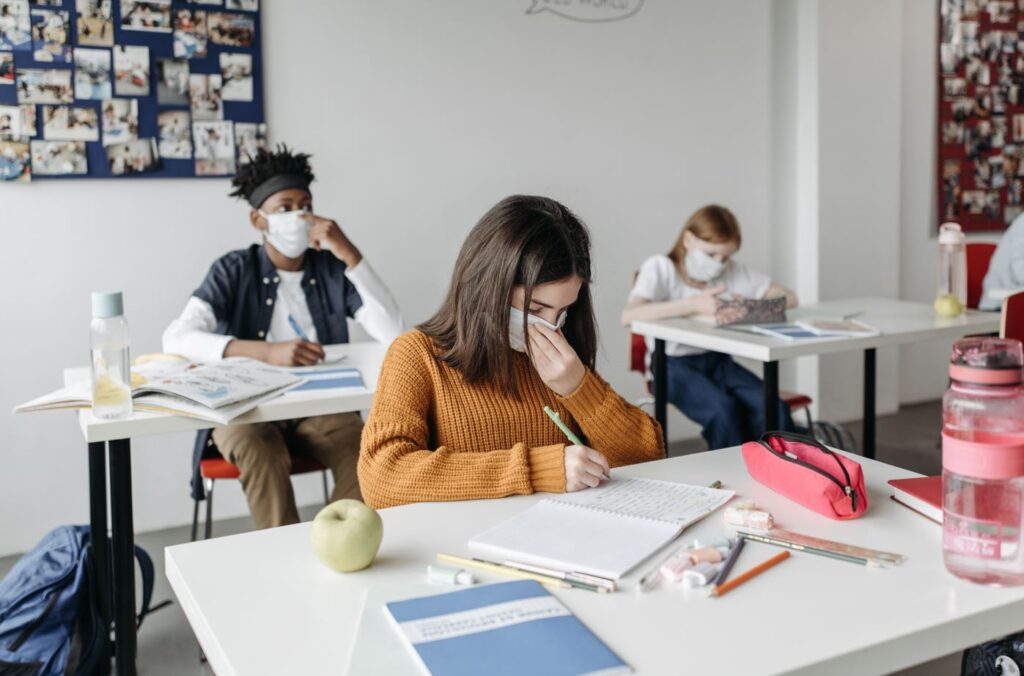The world came to a stop when Covid-19 hit first in early 2020.
Schools shut down, exams were postponed and millions of students found themselves locked out of traditional classrooms.
Explore how COVID-19 accelerated classroom tech adoption in Pakistan, reshaping education through digital tools and remote learning innovations.
A technological evolution was seen, as there was accelerated adoption of technology in classrooms across Pakistan.
Long before the Pandemic, educational technology was still a developing concept in many Pakistani schools.
Advancements such as smartboards, learning management systems and digital tools were limited to elite institutions.
For majority, learning was still happening on blackboards, paper notes and in-person lectures.
Covid-19 acted as a catalyst – forcing schools, teachers and students to embrace digital solutions.
In such new educational landscape, support tools like online assignment makers in Pakistan began to gain traction.
These services allowed students to manage their academic work when access to teachers and peers became limited.
The Pre-Covid Scenario
Prior to the pandemic, there was minimal technological advancements in Pakistani classrooms. A few urban private schools had access to computers or tablets occasionally.
Sadly, many public schools lacked basic internet access or even electricity.
Teachers were not trained in online teaching and students seldom used educational apps or digital platforms.
The digital literacy levels were low and the resistance to change was high.
There was skepticism among schools and teachers who perceived the idea of teaching through screen or submitting homework online as unfamiliar.
The Impact of the Pandemic on Tech Adoption
Once lockdown forced physical classes to be suspended, schools had no options but to improvise. What they did was an unprecedented digital leap.
- Remote Learning Becomes the Norm
Online classes via Zoom, Google Meet and Microsoft Teams became new classroom.
Schools hastened to digitize content and build virtual timetables.
Students and parents had to adapt quickly to this norm, learning how to navigate platforms on the go.
- Government & Private Initiatives
Pakistani government also launched initiatives such as Teleschool, a televised learning channel.
EdTech also stepped in by offering their platform with recorded lecture, quizzes and interactive content.
Mobile learning apps also grew in popularity by helping bridge the gap for students who lived in rural area with limited internet access.
- Teachers Trained on Digital Tools
Teachers has to undergo extensive training in online tools, classroom management apps and virtual communication.
Many institutions held workshops to help their staff with online teaching tools such as Google Classroom.
Challenges Along the Way
While tech adoption increased, it was not without any complications.
There was a large digital divide that became apparent:
- Connectivity Issues: Many rural areas lacked stable internet and power supply that made online learning unreliable.
- Device Shortages: Large number of students did not own personal laptops or smartphones and had to share with their siblings or parents.
- Learning Curve: There were many delays and technical frustration as both teachers and students struggled with digital tools.
- Assessment Difficulties: Conducting fair and secure online exams remained a challenge for many institutions.
Despite such challenges, the collective learning curve became steeper and quicker.
Lasting Changes in the Classroom
Now, in the post-Covid educational environment, technology is a luxury – being a central part of teaching and learning.
- Blended Learning Models
Many schools adopted a hybrid approach that combines in-person teaching with digital resources.
Notes, assignments and even parent-teacher communications are increasingly happening online.
- Digital Homework & Evaluations
Assignments that were once done on paper are now being submitted on digital tools. The online portals allow teachers to grade and assign students tasks online and with ease.
Such systems encourage teachers to monitor progress in real-time using in-built analytics and evaluate each student’s learning curve separately.
- Increased Self-Learning
Nowadays, the internet is filled with free online resources that allow students to learn at their time of convenience.
This encourages students to study at the pace that suits them and also allow them to develop skills such as self-motivation and critical analysis that is vital for success.
The Role of Academic Support Services
As technology is being incorporated into the education environment, students are also compelled to seek guidance during this transition.
This has given the rise to platforms like essay writing Pakistan for students, who help provide assignment solution, formatting and citation guidance.
Such platforms have become an academic guidance for pupils who need assistance with topic research or even organizing their own ideas.
Conclusion
Covid-19 caused disruptions in the daily lives and such a crisis response led to a smarter and more accessible education.
This shift provides a more dynamic, flexible and inclusive learning environment for students in Pakistan.
If the government and schools collectively focus on accessibility, innovation and teacher empowerment, Pakistan can build an education system that thrives through any disruption.
- How COVID-19 Changed The Classroom Tech Adoption in Pakistan
- Explore how COVID-19 accelerated classroom tech adoption in Pakistan, reshaping education through digital tools and remote learning innovations.
- tech adoption
Related posts:
 Engineering Design Assignment Help: Making Complex Projects Easier for Students
Engineering Design Assignment Help: Making Complex Projects Easier for Students
 Top 5 Scuba Diving Courses for Adventurers: Find Your Perfect Fit
Top 5 Scuba Diving Courses for Adventurers: Find Your Perfect Fit
 Turnitin Reports Made Easy with Political Science Solution’s Research Guide
Turnitin Reports Made Easy with Political Science Solution’s Research Guide
 How to Get Started with Web Development as a Beginner: Complete Guide
How to Get Started with Web Development as a Beginner: Complete Guide
 Best CBSE Schools in Kompally | Hyderabad – CMR Schools Telangana
Best CBSE Schools in Kompally | Hyderabad – CMR Schools Telangana
 Powerful Legacy of Bhai Balwinder Singh Jatana: A Heroic Journey
Powerful Legacy of Bhai Balwinder Singh Jatana: A Heroic Journey
 CUET PG 2026: Your Complete Guide to the Central University Entrance Test for Postgraduate Programs
CUET PG 2026: Your Complete Guide to the Central University Entrance Test for Postgraduate Programs








